How Long Do Onions Last?
Here’s all about the shelf life, storage, and spoilage of onions. Learn how long they last, when to toss them, and what’s the best way to store them.
So you’ve stocked up on onions and realized you bought much more than you can use in a reasonable time. That begs the question: how long do onions last?
Or maybe yours are quite old, and you’re not sure if you can use them safely. How to tell if onions are bad?
If either sounds familiar, or you’d like to learn a thing or two about onions, this article is for you. Read on.
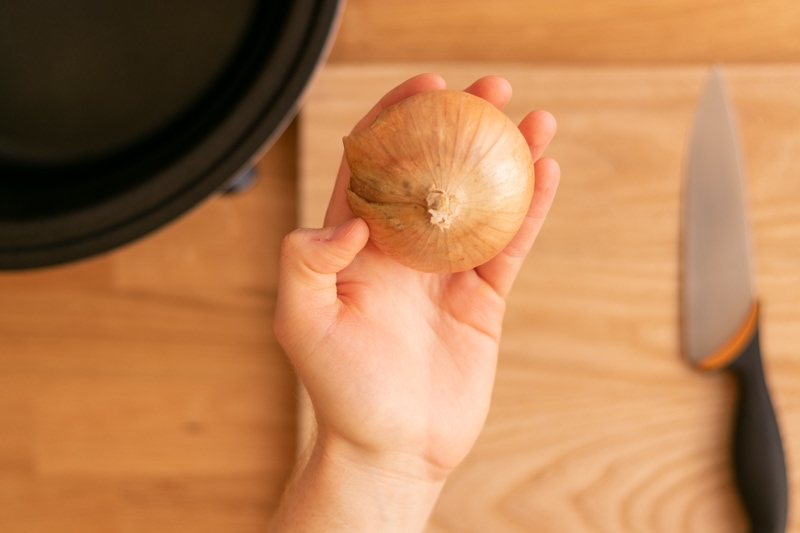
How Long Do Onions Last?
| Pantry | Fridge | |
|---|---|---|
| Fresh whole onions | 2 – 4 weeks | 3+ months |
| Fresh red onions | 2 – 4 weeks | 3+ months |
| Sliced or chopped onions | 4 – 7 days | |
| Sweet onions | 4 – 7 days | 2 – 4 weeks |
Whole onions keep for 2 to 4 weeks at room temperature and more than 3 months if refrigerated. No matter the storage spot, onions need good airflow, so they don’t grow mold.
After cutting, onions keep for 4 to 7 days in a sealed container in the fridge.
Of course, the overall storage time depends on several factors. The most important of them are:
- the cultivar (some are good keepers while others no so much), though you don’t have much of a choice in this department – usually onions are just labeled “onions” without any further details
- the quality of the onion when purchased (the bulb being firm, with no soft spots or bruises)
- storage conditions (lower temperatures help onions last longer)
But if you do a decent job at choosing fresh and firm ones and storing them properly, yours should last at least those two weeks in the pantry or three months in the fridge.
That said, those periods work only for “regular” onions. Green onions have a shorter shelf life, and so do sweet onions (which we’ll cover in a moment).
Now, let’s briefly touch upon cut onions.
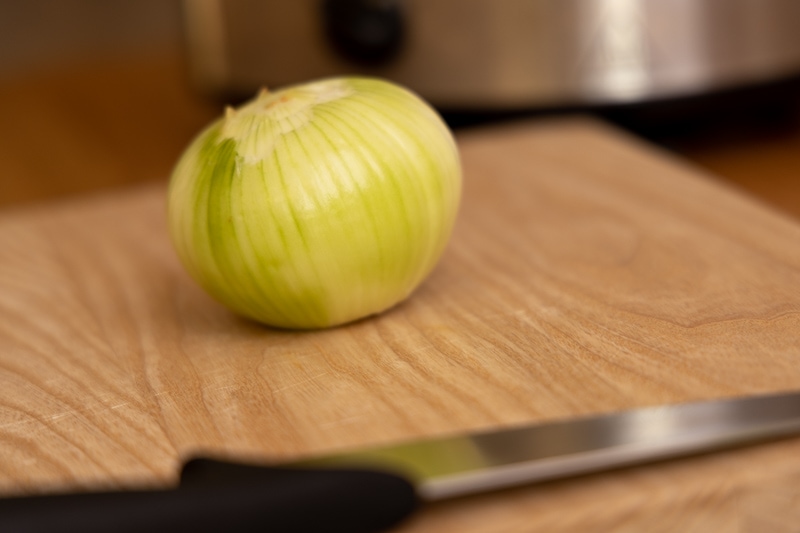
Cut Onions
Cut, sliced, or chopped onions keep for 4 to 7 days in the fridge. Make sure they are sealed tightly in an airtight container or freezer bag, so they don’t dry out or pick up any smells from the refrigerator.
If you’re thinking about prepping some veggies on a Sunday evening to use throughout the week, I suggest cutting enough for about four days. This way, you’re making sure they don’t go bad. And if need be, you can always schedule another cutting session for Thursday evening.
Cut too many onions? Use them to make quick pickled onions, which last for two to three weeks, and can be used in salads, burgers, and more.
Red Onions
Red onions, similar to regular onions, last for 2 to 4 weeks at room temperature, and for more than 3 months if stored in the fridge. And they require ventilation, no matter where you keep them.
As you can tell, red onions aren’t much different from “normal” onions, at least in the shelf life department. They taste different and work great in other dishes, but keep as well as their yellow counterparts.
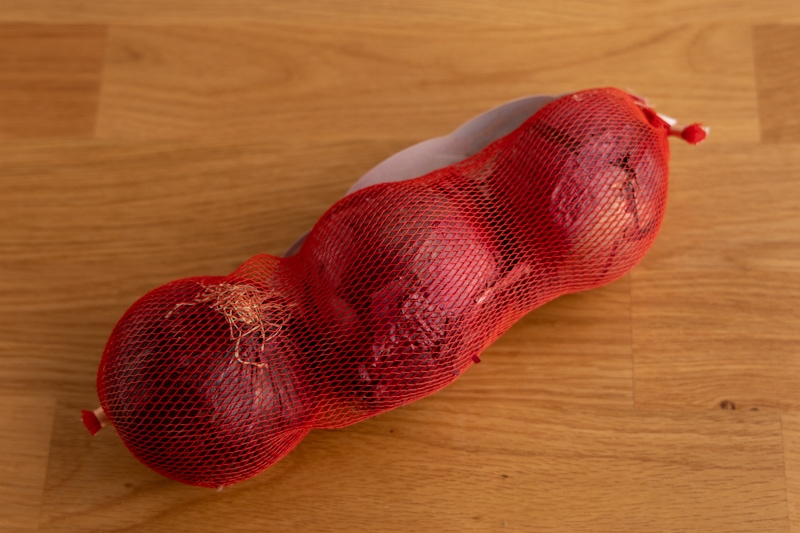
Sweet Onions
Sweet onions last up to a week at room temperature and about a month in the fridge. They don’t last as long as regular ones due to their lower pyruvic acid content.
Because of that, even though they’re being sold unrefrigerated, you should place them in the fridge once you get home.
Again, these periods are only rough estimates, and your sweet onions might last a couple of days longer. But don’t expect them to keep nearly as long as regular yellow and red onions.
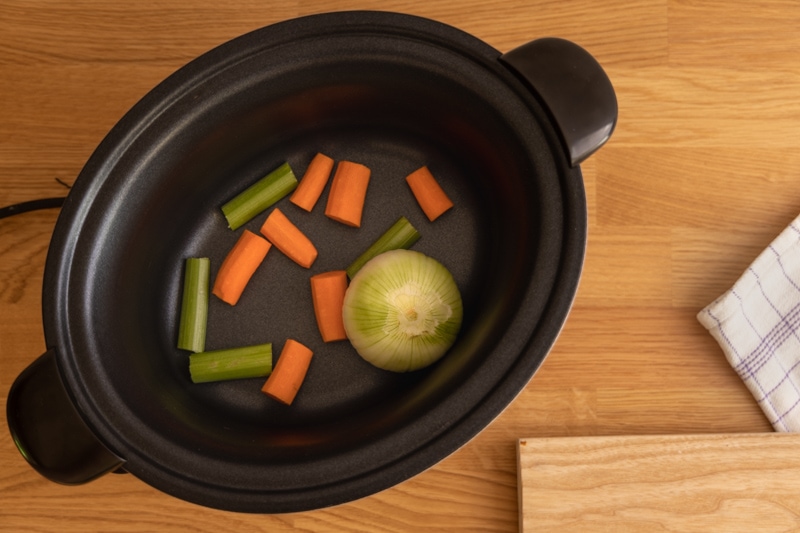
How to Tell if Onions Are Bad?
Main article: How to tell if onions are bad?
Discard an onion if:
- It’s soft, mushy, or slimy. All are signs of water loss, and if your onion got to that point, it’s no good. That said, if only a small area is soft and the rest is nice and firm, you can often peel a layer or two to remove that area and use the rest.
- It smells off. Whole uncut onions have a very mild, slightly earthy smell. So if you notice that yours give off a strong, sharp aroma, it’s no good. The same is true if the onion smells “funny.”
- It has large rotten or moldy areas. As usual, a small brown, black, or otherwise spoiled spot is okay to cut off with some margin. But if it’s larger than that, the onion is done for.
- The bulb is discolored. If, after peeling the bulb, you notice that it’s heavily discolored, chances are it’s no good. Usually, that discolored onion will also smell off.
Next, let’s talk about a couple of things that are normal for onions.
The first is papery skin and coarse outer layers.
Sometimes you only need to remove the papery skin, and the rest is good to use. Other times you need to remove an outer layer or two because it’s dirty, coarse, or dry. Both are completely normal.
(You sometimes need to remove outer leaves from brussels sprouts, too.)
Second, a brown and dry layer inside sometimes happens.
If that’s the case, you can cut the onion in half, take it apart, discard that layer, and use the rest. If you needed the onion whole for a broth, I wouldn’t use it. It’s best to take a good look inside to learn if it’s only a dry section or something more serious.
Finally, sprouting onions are okay to use. Cut off the sprout, remove the innermost section the sprout grows from, and use the onion.
Other than the above, if you notice anything that seems off about the onion, err on the side of caution and discard it. Better safe than sorry.
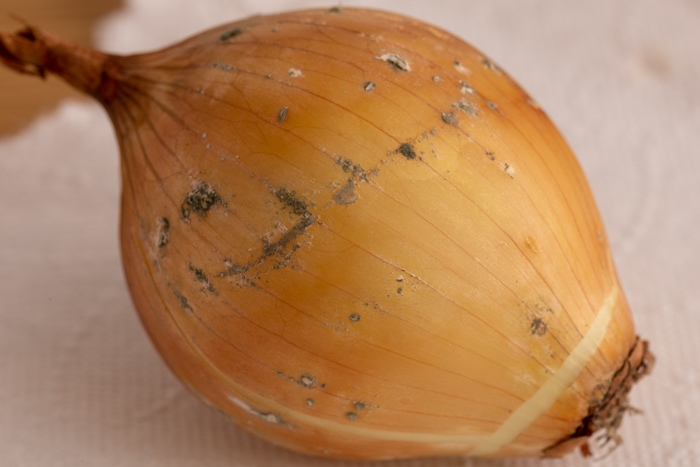
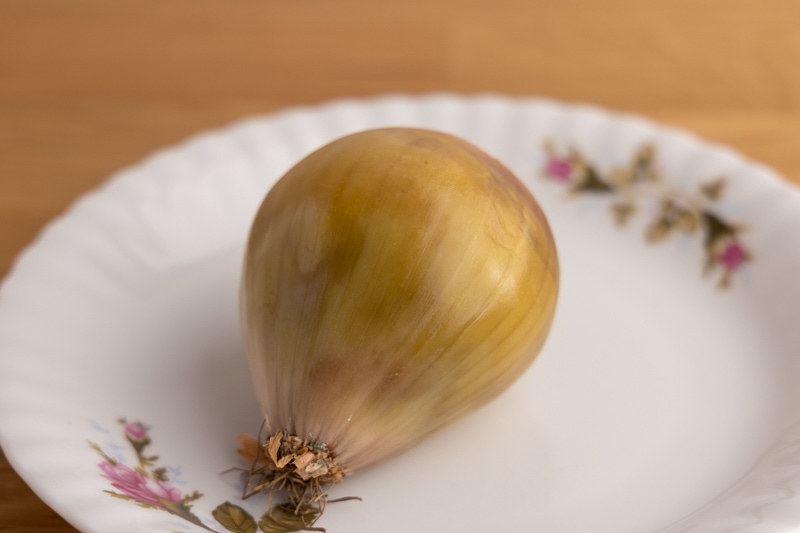
How to Store Onions?
Storing onions properly is quite similar to storing garlic or shallots. The three factors to consider are temperature, humidity, and air circulation.
When it comes to the first one, cool (but not cold) temperature is ideal, so a pantry or a dark cabinet in the kitchen that’s away from the stove will work. To take care of the second factor, make sure the place is dry, and there are no sources of moisture near.
Don’t wash the onions before putting them in storage. The same is true for their not-so-distant relatives: chives and leeks.
For air circulation, make sure the bag you store the onions in allows free airflow. If it’s a brown bag, punch some holes and leave the top open. Or use a bowl or a container without a lid and transfer the veggies there.
A plastic bag isn’t a good option for storing onions, so I’d suggest you use one of the other options. And try not to stack multiple layers of onions on top of each other. The air must circulate freely, so the onions are nice and dry while in storage.
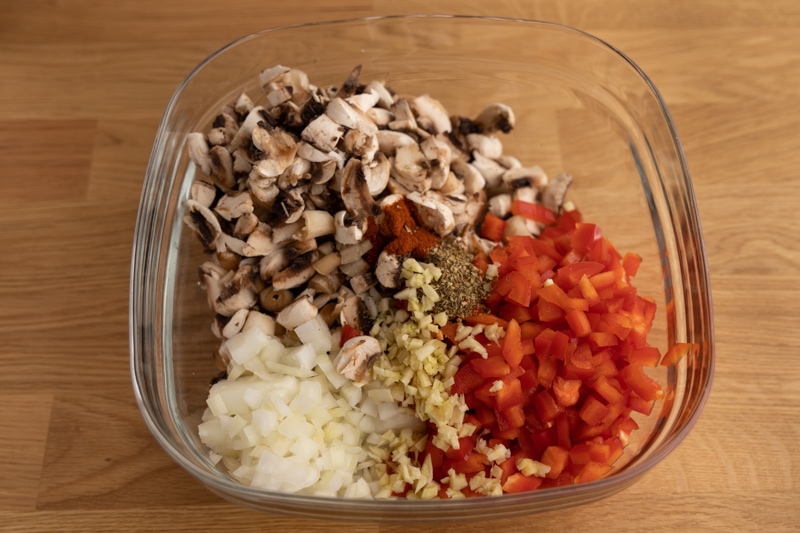
Once you sliced or chopped the onions, the fridge is where you should store them. Put them in a freezer bag or an airtight container. This way the veggies won’t absorb any moisture from the environment, won’t dry out, and their smell will be trapped inside that container.
Rotten Records: Share Your Snap!
Caught some food past its prime? Upload your photo to “Rotten Records” and help others spot the signs of spoilage. Every image makes our food community safer and more informed!
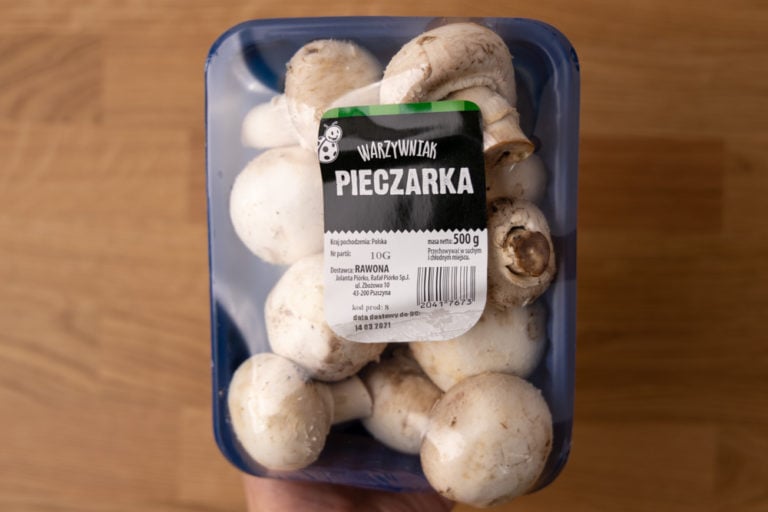
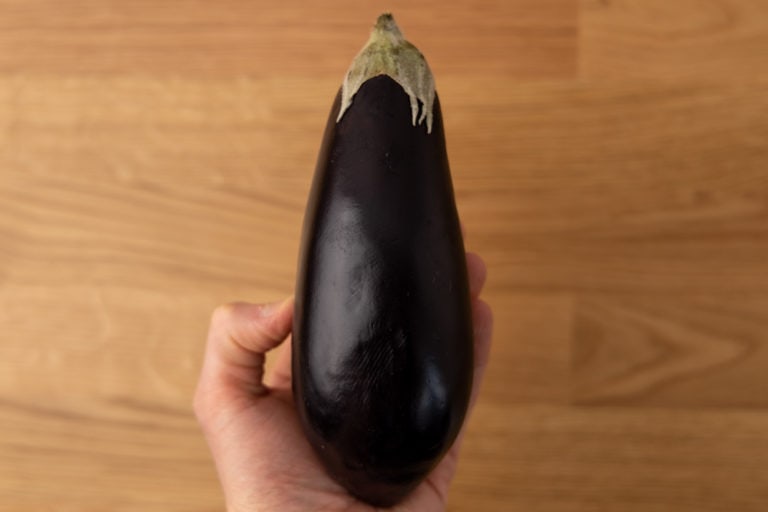
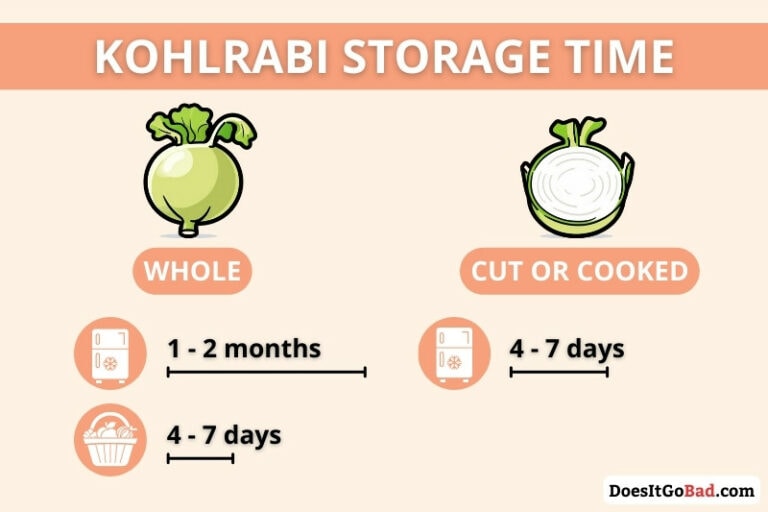
![How to Tell if a Sweet Potato Is Bad? [4 Spoilage Signs]](https://www.doesitgobad.com/wp-content/uploads/Inside-of-old-sweet-potato-768x512.jpg)
![Can You Freeze Celery? [Yes, Here’s How]](https://www.doesitgobad.com/wp-content/uploads/Frozen-celery-in-freezer-bag-768x512.jpg)